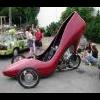Search the Community
Showing results for tags 'stocks'.
-
Looking for 4 X 100 16" one for my Dads new ride.. cheers
-
Anyone here using those non-SG based online brokerage for US stocks? Any positive or negative experience? Eg. E*trade? https://global.etrade.com/glp/sg/en/home Or just using normal POEMS/DBSvickers/OCBC etc?
-
Recently saw this very new stock... Went to recee abit. . . Polaris Ltd., formerly CarrierNet Global Ltd., a holding company. The Company is engaged in active in the distribution and retail of mobile phones, consumer electronics, and related services and accessories. The Company’s business consists of four subsidiaries, of which three are wholly owned and one is a joint venture: Polaris Device Pte. Ltd., which is regional mobile handset distributor; Polaris Network Pte. Ltd., which is a M1 distributor with a network of M1 retail shops in Singapore offering mobile handsets and services; Polaris Telecom Pte. Ltd., which is a SingTel distributor with a network of SingTel retail shops in Singapore offering mobile handsets and services, and Polaris KKC Holdings Pte. Ltd. (70%:30% joint venture between Polaris Ltd. and Koko Capital Ventures Ltd), which operates a network of e-city retail shops in Myanmar offering mobile phones, tablet computers and related accessories. In March 2014, it announced that it has incorporated Polaris Digimedia Pte. Ltd. https://www.google.com/finance?q=SGX:5BI Think can buy and keep?
-
“The Fed has decided to put the waiting world out of its misery, and start the taper that most economists believe is justified by the data,” said Rob Carnell, chief international economist at ING. The central bank also emphasised that it would keep interest rates close to zero “well past” the point that the US jobless rate falls below 6.5 per cent – and said it wanted to see inflation heading back up towards its 2 per cent target before the first rate rise. “This is a very dovish ‘taper-lite’, where the Fed has done its utmost to provide an offset with its forward guidance, notably on the inclusion of inflation in the unemployment threshold,” said Alan Ruskin, strategist at Deutsche Bank. The S&P 500 equity index reversed an early decline to rise 1.7 per cent to a record closing high of 1,810. The CBOE Vix index of equity volatility, often called Wall Street’s “fear gauge”, was down more than 14 per cent. The dollar also rallied strongly, pushing above Y104 to its highest level against the yen in more than five years. The euro was down 0.5 per cent at $1.3692 while the dollar index, a gauge of the currency ’s value against a basket of counterparts, was up 0.4 per cent. US government bonds appeared largely unfazed by the Fed’s move, with the yield on the 10-year Treasury up 4 basis points at 2.88 per cent – roughly where it stood before the announcement. The two-year yield was just 1bp higher at 0.33 per cent. But gold gave back an earlier advance to stand $10 lower at $1,219 an ounce. Among industrial commodities , Brent crude settled $1.19 higher at $109.63 a barrel, although copper had a more cautious session. The metal edged back 0.1 per cent in London to $7,270 a tonne. European equities moved higher ahead of the Fed announcement, albeit in relatively subdued trading, with the FTSE Eurofirst 300 climbing 0.9 per cent. In Tokyo, the Nikkei 225 climbed 2 per cent, as the yen came under early pressure from data showing that Japan’s trade deficit had widened in November. “The weak yen is largely to blame for the recent widening of the trade deficit,” said Marcel Thieliant at Capital Economics. “As domestic demand accelerates ahead of the consumption tax hike, the deficit may well widen further in the near-term, but we should see a narrowing once the tax has been raised.” Sterling also provided some interest on the currency markets as it briefly broke back above $1.64 – and gilt prices fell – as expectations for an earlier than expected UK interest rate rise were stoked by robust jobs data. The unemployment rate fell to 7.4 per cent, the lowest since April 2009, raising the chances that it would fall below the Bank of England’s 7 per cent threshold next year. The minutes of the December meeting of the Bank’s Monetary Policy Committee, meanwhile, highlighted concern among members about sterling’s recent robust performance. “The Bank of England continues to stress that while the economy’s improved growth performance is welcome, it is still some way from returning to normality and significant headwinds remain, so interest rates need to remain down at 0.5 per cent for some time to come,” said Howard Archer, chief UK economist at IHS Global Insight. Nevertheless, the pound was up 0.8 per cent against the dollar at $1.6387 – in spite of the US currency’s post Fed announcement rally – while the yield on the 10-year UK gilt rose 5bp to 2.93 per cent. There was also further positive news on the German economy, as the Ifo institute’s business climate index increased to 109.5 this month, the highest reading since April 2012. “Judging by the ‘flash’ purchasing managers’ index released earlier this week, and this Ifo survey, the German economy remains on track to outperform its euro area peers over the near term at least,” said Grant Lewis at Daiwa Capital Markets.
- 21 replies
-
- fed
- federal reserve
-
(and 3 more)
Tagged with:
-
TOKYO—Japan's $1.26 trillion public pension fund will likely announce a boost to stock and foreign-bond investments in early autumn, the head of its investment committee said Tuesday, potentially sending tens of billions of dollars into new markets. A shuffle at the world's largest pension fund would achieve one of Prime Minister Shinzo Abe's objectives and could help invigorate Japan's economy, which is beginning to emerge from a decadeslong era in which investors mostly avoided risk. "I personally think that we need to complete [the new portfolio] in September or October," Yasuhiro Yonezawa, head of the Government Pension Investment Fund's investment committee, said in an interview. "There's no reason to be slow." Mr. Yonezawa outlined a tentative plan for a portfolio shift that would raise the allotments of the fund's assets to go into domestic stocks, foreign bonds and foreign stocks by five percentage points in each category. The aim is twofold: to boost returns to ensure Japanese retirees get the payouts they expect, and to stimulate risk-taking at home by funneling money into growing Japanese businesses. That is in tune with the prime minister's pro-growth "Abenomics" policies. Since taking office in late 2012, Mr. Abe has exhorted the pension fund to rethink its long-standing conservative investment strategy. Currently, domestic stocks and foreign stocks are each targeted to get about 12% of the fund's investment. Under the baseline scenario outlined by Mr. Yonezawa, those figures would rise to 17% each, while the portion allotted to foreign bonds would rise to 16% from 11%. Domestic bonds would fall to 40% from 60%, and the portfolio would likely include a new category for alternative investments in areas such as infrastructure, he said. Mr. Yonezawa said he and two other members of the eight-member investment committee would begin to craft a new portfolio this week. The figures could change based on the group's discussions, he said, adding that the three members would discuss whether to carry out the reshuffle before or after the announcement set for this autumn. The changes could raise uncertainty for tens of millions of Japanese who count on steady pension payouts in retirement. With its traditional focus on Japanese sovereign debt, the fund has performed relatively well in recent years despite extremely low debt yields, in part because the country's deflationary environment was good for bonds. "The [Government Pension Investment Fund] shouldn't be used as a tool for short-term-oriented intervention in asset markets. It's not a piggy bank for short-term policy purposes. Each penny of the GPIF is pension money," said Nobusuke Tamaki, a former fund official who now teaches at Otsuma Women's University. The new focus is essentially a bet on inflation, which Mr. Abe and Japan's central bank have pledged to create. "Until now, it wasn't too good to invest in Japanese stocks, when there wasn't Abenomics," Mr. Yonezawa said. "But recently, Japanese companies are changing, and I think things are getting better." He said Japanese firms were getting a higher return on equity and shifting toward stronger corporate governance. The Japanese pension fund is like Social Security in the U.S. in that it collects money from payroll taxes and uses the cash for payments to retirees. But, unlike Social Security, which puts its funds in nontradable Treasury securities, the Japanese fund can invest in a range of assets, including stocks and bonds from both Japanese and foreign issuers. The fund has invested conservatively, giving a 60% weighting to domestic bonds. It has operated on a shoestring budget out of a single office in Tokyo with fewer than 80 employees. By comparison, the second-largest pension fund in the world—Norway's $770 billion Government Pension Fund Global—is run by an organization with about 370 employees. Reports of changes to the Japanese fund lifted the Tokyo stock market last week, with investors aware that even a shift of a percentage point could send $10 billion flowing in a new direction. But the Nikkei Stock Average remains down for the year as foreign investors question whether Mr. Abe's program will be enough to jolt Japan's economy out of its doldrums. While the Japanese pension fund's changing priorities could push up the value of some foreign assets, the money would likely be so diversified that its impact would be diluted. Even before the new portfolio is completed, the fund has made significant changes in recent months. In February, it said it would start its first joint infrastructure-investment program, through which it would work with other investors to fund projects such as power plants, gas pipelines and railways in developed countries. The fund has started a new four-person division dedicated to nonlisted assets such as infrastructure, private equity and real estate, people with knowledge of the organization say. The fund has traditionally hired large asset managers such as BlackRock Inc., but in April it unveiled a new roster of managers for its portfolio of Japanese stocks and brought on some little-known names. One of the new managers, Seattle-based Taiyo Pacific Partners, has sponsored annual retreats for 25 to 35 Japanese chief executives for the past five years with the hope that improving management will translate into better shareholder returns. In one group activity at the retreat, Japanese managers work together under hot conditions to pound unfinished metal into samurai swords. Fund managers are interested in seeing whether the pension fund will continue to diversify its roster of asset managers, although some say the fund's paltry management fees don't make the business worthwhile. The pension paid a little more than $200 million, or about 0.02% of its portfolio, for outside managers in the fiscal year that ended in March 2013.
-
A Temasek Holdings Pte unit offered to buy Olam International Ltd. (OLAM) in a bid that values the commodity trader at S$5.3 billion ($4.2 billion), about 16 months after it helped stave off an attack by short-seller Carson Block. Breedens Investments Pte is offering S$2.23 cash per share, the Singapore-based company said today in a statement, a 12 percent premium to Olam’s last closing price of S$1.995. It is also making an offer for Olam’s outstanding bonds and warrants. Temasek, Singapore’s state-owned investment firm, became the largest investor in Olam, one of the world’s top three coffee and rice traders, after concerns raised by short-seller Block in November 2012 caused the stock to plummet. The offer has the support of Olam’s founding family and management, with some agreeing to sell a proportion of their shares to the bidding group. “Temasek is already a large holder of Olam so they probably know the business better than everybody else,” said Robert Aspin, the Singapore-based head of equity investment strategy at Standard Chartered Plc. “The fact that they are willing to pay a premium is indicative of the value that they see in the underlying business.” Olam has rallied 30 percent this year through March 12 in Singapore, compared with a 2.2 percent decline in the benchmark Straits Times Index. The stock, which closed as low as S$1.395 after Block’s attack, reached a near 17-month high of S$1.995 on March 12. An employee walks past the logo of Temasek Holdings Pte at the company's headquarters in Singapore. Group Support Breedens also has an agreement with a group including Kewalram Singapore Ltd., Olam’s founding family shareholder, and 10 Olam executives including Chief Executive Officer Sunny Verghese to not tender their shares until six months after the offer closes, Breedens said in a statement. All totaled they hold 52.5 percent ofOlam shares. Kewalram and three members of key management have agreed to sell a 5.6 percent stake in Olam in acceptance of the offer. Credit Suisse Group AG, DBS Group Holdings Ltd., and United Overseas Bank Ltd. advised Breedens. Breedens doesn’t plan to make any major changes to Olam’s businesses or terminate employees. It also intends to keep Olam as a listed company, unless the minimum float requirements aren’t met, it said. “We believe a successful offer will provide Olam with a stronger and more stable shareholder base to support Olam’s strategy and business model for the long term,” Breedens Director David Heng said in the statement. “We have invested in Olam over the years, and share a common investment philosophy to invest and build for the long term.” Block’s Bet Block said in November 2012 he was betting against Olam because he questioned the trader’s accounting methods and asset purchases, pushing the stock to a more than three-year low in December 2012. Olam rejected the assertions by Block and his research firm Muddy Waters LLC. Block today declined to comment. “Olam has been oversold following the issues raised by Muddy Waters and has bounced back strongly as the company addressed those concerns,” Alan Richardson, a Hong Kong-based money manager at Samsung Asset Management, said by phone before the announcement. As well as adding Olam shares after the Block allegations, Temasek also backed a $750 million bond sale by the commodity trader. Olam said in December 2012 it planned to sell bonds and warrants to address any “lingering doubts” about its finances. The investment firm agreed at the time to buy any rights not taken up by other investors. Olam is a supplier and processor of agricultural products and food ingredients across 16 platforms in 65 countries. Temasek holds 24.6 percent of Olam through its units Breedens and Aranda Investments Pte, and the founding family has a 20.2 percent stake, according to today’s statement.
-
Stocks Tumble; Dow Drops Over 200 Points Equities Post Biggest One-Day Drop Since Feb. 3 By CHRIS DIETERICH Updated March 13, 2014 4:38 p.m. ET The Dow Jones Industrial Average tumbled more than 200 points on Thursday as soft economic data from China and rising tensions in Ukraine helped trigger the biggest one-day drop for U.S. stocks in more than six weeks. Stocks have struggled to find traction in 2014 after a nearly unimpeded rally last year. Concerns over the true strength of the U.S. economy, turmoil in emerging markets and worries about Federal Reserve policy have kept investors on edge, making them reticent to buy stocks that are near all-time highs. The Dow fell 231.19 points, or 1.4%, to 16108.89, notching its fourth decline in a row and biggest one-day drop since Feb. 3. The S&P 500 slumped 21.86 points, or 1.2%, to 1846.34. Thursday's slump dragged the index 0.1% lower for the year. The Nasdaq Composite Index fell 62.91 points, or 1.5%, to 4260.42. There was no single piece of news driving the selloff. Stocks quickly turned lower in the morning and accelerated losses as the session progressed. The sharp decline came as investors considered more weak data from China, the world's second-largest economy, and incremental developments in tensions between the West and Russia over Ukraine. High valuations for stocks as well as the S&P 500's decline below a key level of technical support likely contributed to the selloff as well, traders said. Wall Street's trading desks saw investors seeking out haven assets amid the slide in stocks. Mohit Bajaj, director of ETF and portfolio trading services at broker WallachBeth Capital, saw some clients swapping out of U.S. stocks and into Treasury bond exchange-traded funds. "We've been busy," Mr. Bajaj said. "There is been rotation out of equities and into Treasury names." Bonds rallied, with the yield on the 10-year Treasury note falling to 2.659% from 2.726% late Wednesday. Gold futures rose 0.1% to $1,372.20 a troy ounce, settling at a six-month high. Utility stocks, viewed as defensive, were the only of the S&P 500's 10 sectors to gain ground. The Chicago Board Options Exchange Volatility Index, often called the market's "fear gauge," jumped 12% to finish at its highest level since February. Despite the sharp declines, many traders said Thursday's activity didn't feature panicked selling and took place on average volumes. The S&P 500 posted a record high Friday, and investors have shown willingness to step in and buy stocks after big drops for the past year. "We saw real selling, but certainly not panic," said Ian Winer, director of trading at Wedbush Securities. Daily volume in the SPDR S&P 500 exchange-traded fund finished just slightly above its average over the past month, according to FactSet. Recent gains for stocks, as well as uncertainty about the global economy, are enough to keep even bullish investors wary. Jerry Braakman, chief investment officer at First American Trust, prefers U.S. stocks to other markets, but has been concerned about China's soft economic reports. On Thursday, Chinese industrial output in the January-February period rose less than expected from the year-earlier period and down from December. Retail-sales gains in January-February also undershot expectations. "The market is looking for its next catalyst," said Mr. Braakman, whose firm oversees about $1.1 billion in Santa Ana, Calif. He anticipates "sideways" trading until greater clarity emerges on corporate earnings and the global economy. In the U.S., data showed retail sales for February rose 0.3% on the month, slightly topping expectations. Excluding autos, sales grew 0.3%, also beating expectations. Initial claims for jobless benefits in the latest week fell by 9,000, more than expected, to 315,000, the lowest level since November. The dollar fell 1.1% to 101.64 Japanese yen, while the euro fell 0.3% to $1.39 after European Central Bank President Mario Draghi said the central bank has been preparing additional nonstandard monetary-policy measures should the euro zone slide into deflation. European markets fell, with the Stoxx Europe 600 ending down 1.1%. China's Shanghai Composite rose 1.1%, after Chinese Premier Li Keqiang promised to keep economic growth at a reasonable pace this year. Japan's Nikkei Stock Average eased 0.1%. Amazon.com Inc. climbed 0.2% after the company said it would raise the rate for its prime membership, which offers perks such as free and expedited shipping, to $99 a year from $79, the first price increase in the shipping and video-streaming service's nine-year history. Dow component General Electric Co. fell 1.6% after the company said it filed for an initial public offering of its North American retail finance business. Dollar General Corp. slid 2.8% after the discount retailer's quarterly profit fell below Wall Street expectations. Williams-Sonoma Inc. rallied 9.8% after the housewares and furniture retailer's quarterly profit increased on higher sales, namely from its West Elm and Pottery Barn brands.
-
I have been investing (not trading) in stocks since 10 years ago. I got to earn the first time I trade, thinking I'm good I put in more capital, but it turns out that losses are bigger than the profit. Subsequently I got burned losing all my savings when trading the warrants. This puts an end to this, promising myself I should quit trading. A few months back, I'm back again, I traded a lot and lost most of the time. I was an addict to trading. Like an alcoholic, I was not able to control myself. I wanted to get rich quickly, but I kept losing most of the time. This was frustrating. Many times I decided to quit the game but I could not quit either. I was no better than an alcoholic. Can anyone help me?
-
My picks.. Bank outperformance of the STI Targets: DBS S$16.70; OCBC S$9.40; UOB S$22.05. Improving YoY GDP growth until 1Q 2010, and ample liquidity, suggests one more leg of performance as the STI prices in 2010E bank earnings, ROE improvements. 2Q 2010 GDP momentum should slow as accommodative fiscal/monetary policy is reined in. Genting: $1.38 1) a bigger proportion of day passes; and 2) good response to express passes.
-
Just noticed that Suzuki Swift prices have been dropped by a whooping $13,600 after this week's COE bidding http://www.sgcarmart.com/new_cars/newcars_...p?CarCode=10264 They sold only 16 cars in February....so now desperate to clear stocks n make a run for financial year?
-
Anyone here bought Ambac (ABK) stocks today? One of the hottest stock right now. 1 day of trading sees almost a 100% increase. *Warning: This stock is running purely on volume and news. Not advisable for the faint-heart to buy.
-
After Casino open a few days the stock Lau Sai... Now trading @$0.96 - any advice ? What happened ? Investor not happy that many Foreign workers going there ?
-
I wonder if anyone out there got burned terribly with their investment products or holding on to stocks and see them keep sinking deeper and deeper like no end. I got a friend who lost $30,000 actual lost (not paper lost) because he bought the T-bond on the Lehman bank. The vote include paper lost, if you know what this mean (e.g. stock price falling below your purchase value but have not sold yet).
-
ANy bros here have been buying US stocks signed up with UOB Kayhian expensive lah http://www.uobkayhian.com.sg/page/site/pub...tdepthfrrr.html
-
Was just lookingat bloomberg website recently and realize that Vietnam stock exchange has dropped 60% in the last few months. Hands itchy and and threw in a bit of money into a unit trust that specializes in Vietnam, since I don't think its drop wun be as much liao. Surprisingly, it has started to gone up the day I put in.. from 365 to now 409... all within one week! My only black among my reds(China, singapore, Emerging markets...) But wondering when will the rest recover...
-
Are Town Councils really investing in stocks? Can someone who has a Creative annual report verify this? I hope this is not some cannot-clear-CFA-stage 3 fund mgr wannabe action that went unnoticed by audit inspections. http://www.mrbiao.com/blog/town-councils-i...ock-market.html
-
Hi Guys, I have three more spare sets from last group buy before site went down (unable to contact buyers after site came back up): Klasse AIO Klasse Sealant Microfiber towel 2 x Microfiber Applicator pads Price: SGD$91 (inclusive of AIRFREIGHT from US) Pls PM me with contact. Thanks Collection: Seng Kang Area / Tanjong Pagar Area (Working hours) rgds koh













